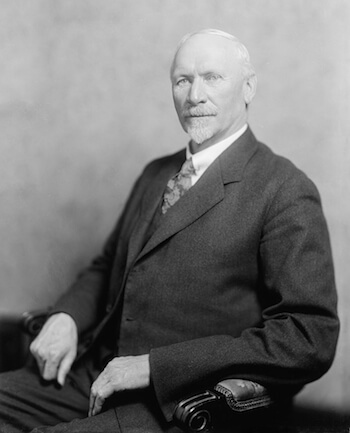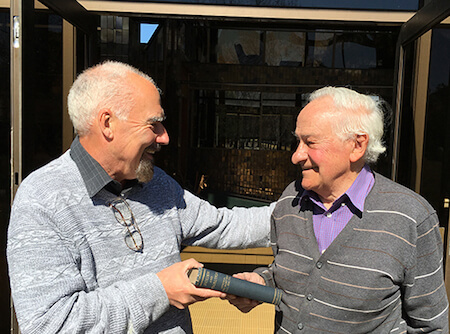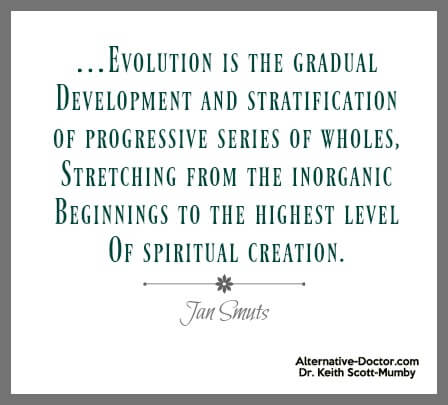We use the word holistic a lot, but what does it really mean?
As I wrote in my amazing book Medicine Beyond, holism (and thence holistic) is a word that was originally coined by Jan Christiaan Smuts, the South African soldier, statesman, and philosopher (1870-1950). He defined it in his 1926 book, Holism and Evolution, as “the tendency in nature to form wholes that are greater than the sum of the parts through creative evolution.”
Einstein himself studied Smuts’ book soon upon its publication and wrote that two mental constructs will direct human thinking in the 21st millennium: his own description of relativity and Smuts’ of holism. How close he has come! (quantum mechanics may trump both in the end).

Jan Christiaan Smuts OM, CH, ED, PC, KC, FRS
The concept of wholeness and holism (sometimes incorrectly spelled wholism) has now become well integrated into our thinking in all spheres. Its simplicity and omnipresence belies the fact that it’s basically a 20th-century concept. There are echoes of Leibniz’s monads model here, but the German philosopher did not explain how small individual units would operate together; only that reality was made up of an infinite number of such units.
As originally conceived by Smuts, holism meant that small units and subdivisions would inevitably unite into larger wholes, which would in turn aggregate, and so on. Today we use the term mainly for wholes, which are already united and have been from the beginning. However, it does seem that, in a strange way, Smuts foresaw the emergence of chaos theory and so-called strange attractors.
The main point to make is that you cannot learn about the whole by studying the parts because the whole is not just a collection of parts.
We cannot discover what a radio set does by examining in detail every wire, transistor, capacitor and rheostat, no matter how in depth we look at these individual units. The radio has to be seen as an entire unit, which can then pick up radio broadcasts from a distance.
Knowing about every single component of a radio set—and even how all these parts interconnect—will NEVER give you the insight that there is a distant radio station somewhere, broadcasting music and news!
The so-called parts are in fact not real but largely abstract analytical distinctions, and do not properly or adequately express what has gone to the making of the thing as a whole.
Smuts’ book is a remarkable insight, even more so, considering he was not a biologist or doctor.
Imagine my surprise therefore, when my dear friend—Frikkie van Kraayenberg—wanted to give me a special present on my first visit to South Africa: it was a precious copy of Holism and Evolution! Here’s Frikkie, snapped by Vivien, presenting it to me!

Frikkie himself is a remarkable philosopher and teacher. There are few like him who walk the earth!
Jan Christiaan Smuts (1870- 1950)
Smuts served as prime minister of the Union of South Africa from 1919 until 1924 and again, from 1939 until 1948.
Smuts condemned the Nazi-inspired Greyshirt movement, and was a great supporter of Zionism. So much so that a settlement in Palestine (as it was then called), was named in honor of him in 1937.
As intimate collaborator of Winston Churchill and others, Smuts became a Field Marshal of the Allied Forces in September 1941. Following the Second World War, his major achievement was drafting the Covenant of the United Nations.
Smuts lost the 1948 South African general election, dying two years later on 11 September 1950. The demise of Smuts signaled the start of South Africa’s slide into Apartheid and the end of a more enlightened era.
Holism
Holism is a viewpoint additional and complementary to that of science, whose keywords are continuity and mechanism. Current scientists believe with fervor (and not much common sense) that the rules of mechanics are sufficient to account for all the properties of a whole.
The validity of this simple scientific scheme of things has been commonly, but never universally, accepted even among scientists. There has always been a corps of us who simply reject the mechanistic notion of being. For one thing, we refuse to accept the inferior position that mechanistic science assigns to mind and Being.
The argument is stalemate: they say all mind is chemical, electrical and mechanical; we say there is not a shred of evidence to back up these claims, which remain therefore a credulous and foolish interpretation of reality.
Evolution

Like me, Smuts refused to accept the full-blown hypothesis of Darwin’s natural selection idea (actually by Alfred Russell Wallace but Darwin stole it and his connections made sure that he got the fame). Smuts argues that if life and Being did indeed evolve from matter, then our view of matter is changed and it cannot be the “dead stuff” of the old model. Rather matter would have to transform within this model.
This is a unique line of argument and I have met it nowhere else before.
Moreover, he is smart to point out that the idea of purely mechanical natural selection at work is nonsense, in that there are powerful psychical elements from any living organism, each of which has its own strong purpose, desires and intentions.
Here Smuts is wise in observing that:
“The science of the nineteenth century was like its philosophy, its morals and its civilization in general, distinguished by a certain hardness, primness and precise limitation and demarcation of ideas. Vagueness, indefinite and blurred outlines, anything savouring of mysticism, was abhorrent to that great age of exactitude. The rigid categories of physics were applied to the indefinite and hazy phenomena of life and mind. Concepts were in logic as well as in science narrowed down to their most luminous points, and the rest of their content treated as non-existent.”
Well, that was before the rise of quantum physics! Now even science has to admit is core precepts are hazy, indeterminate and far from “hard”. In fact, modern science is about as fuzzy as it could be. Yet it still clings to the outmoded 19th century view that “we know everything, it’s all there, we have precise boundaries and a full understanding of how nature works”!
3 Orders of Reality…
Smuts made a great deal out of the 3 prime orders of reality: matter, life and mind. Each was distinct and entirely different in nature from the other two, he declared.
In spite of the great advances which have been made in our knowledge, some fundamental gaps remain. Matter, life and mind still remain utter disparate phenomena, yet the concepts of all three arise in experience; and in the human all three meet and mingle.
He thought we should concentrate on filling in the missing connections, or investigating how they are different, rather than diving deeper and deeper into each one separately: hence holism.
Jan Christiaan Smuts was a great man, a humanitarian politician and a great thinker. My friend Frikkie Van Kraayenberg is easy to align with him.
To gain a far more in depth understanding of how the mind, matter and life intermingle, you need to re-read my book Medicine Beyond. It’s far beyond the confusions of modern mechanistic science and deeply into the realms of spirit and other-worldly forces that actually govern our universe (including non-material mind and Being).
As Frikkie says:
“I have been fortunate to meet great pioneers. I’ve been fortunate to collect outstanding books from around the world… But the most outstanding book was Medicine Beyond. I was absolutely amazed that one individual could have covered as many topics…”
